Name: Greg Dunn
Which came first in your life, the science or the art?
I don’t really think it’s possible to say, seeing as how both art and science share a primordial root of experimenting with the world. I have always been, and I’m guessing will always be, an experimentalist. The only real difference of artistic and scientific experimentation is whether you are using an external (science) or internal (art) metric to evaluate your work. I was definitely a kid who liked to experiment, and I think it’s easier and more accurate to say that I’m a pretty curious person all around. That led me through many random obsessions. Their unifying foundation is in my interest in the human experience as it relates to the mind.
“I have always been, and I’m guessing always will be, an experimentalist.”
Greg Dunn

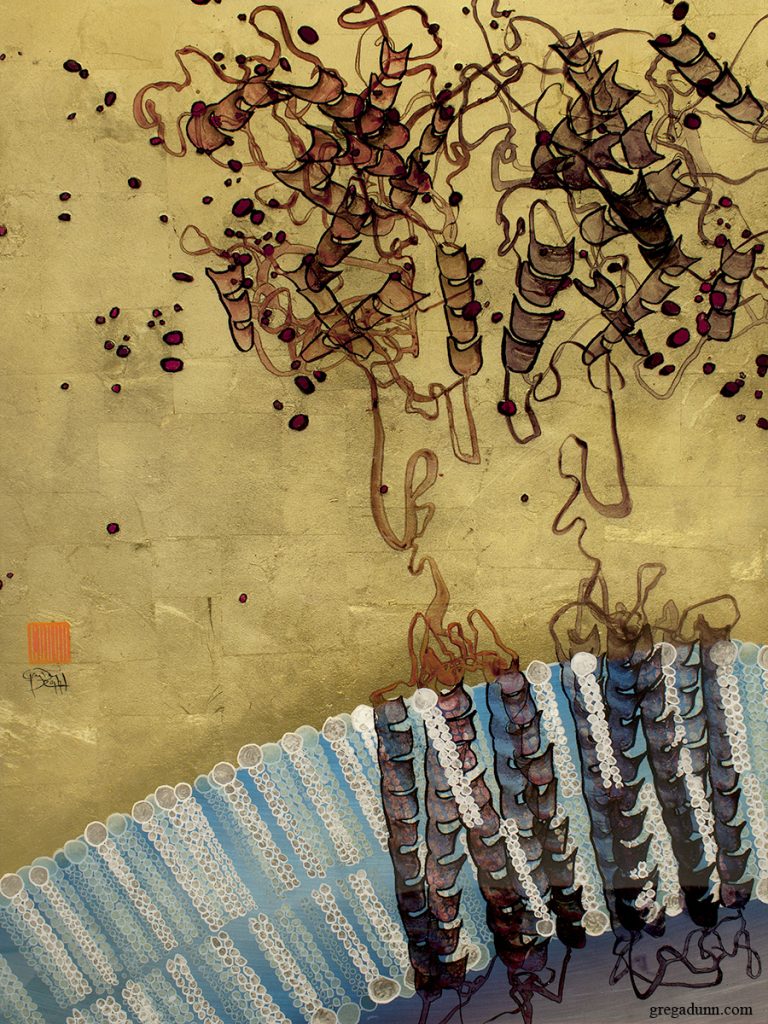
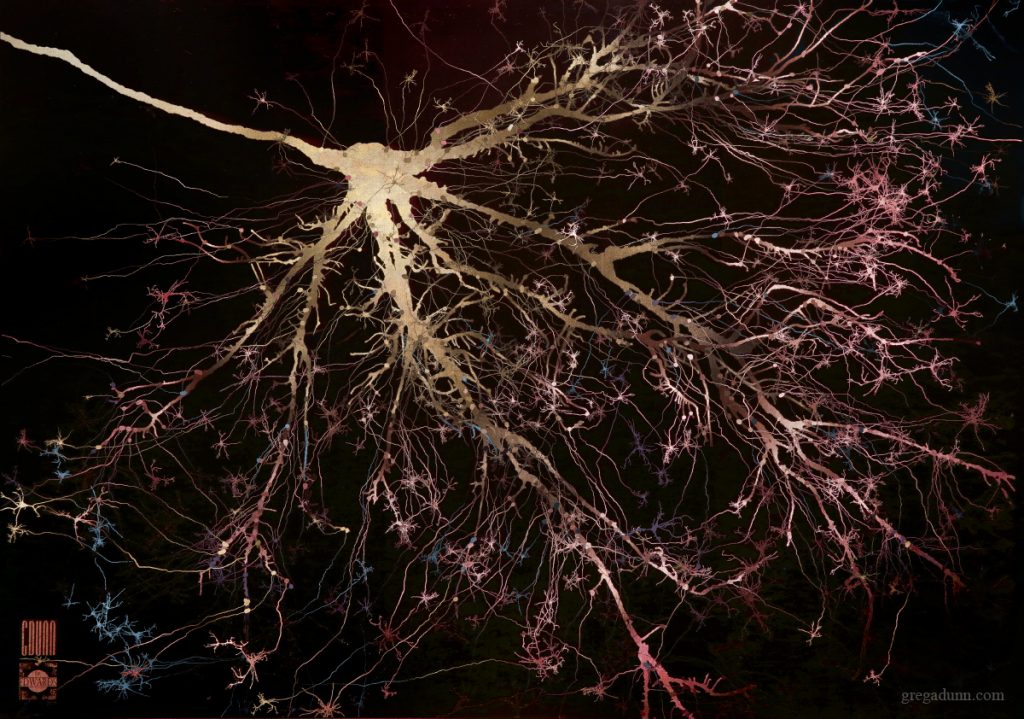
Which sciences relate to your art practice?
Neuroscience, of course, but others weigh in heavily as well, particularly as they apply to the methods I use. Microfabrication is a major input into my work, as I use photolithography to create tiny structures to manipulate light in specific ways. Optics is also inescapable as the reflective properties of my surfaces are of huge importance. As it relates to the microetchings in particular, math and computer science play a big role in helping to create the datasets necessary to create animations through reflected light. And finally, a basic understanding of materials science is a helpful building block to create new aesthetic methods.
What materials do you use to create your artworks?
I use a lot of gold and other precious metal leaf in my work. Gold is incredibly versatile, soft, can be hammered incredibly thin, and is a relevant player both aesthetically and from an engineering perspective. I also use materials drawn from photolithography, the art and science of using photosensitive materials, along with masks, light, and developing chemicals to etch microscopic features into surfaces. I also use a lot of ink, in particular in ways that allow me to allow the fluid dynamics to unravel into the way nature wants them to behave.
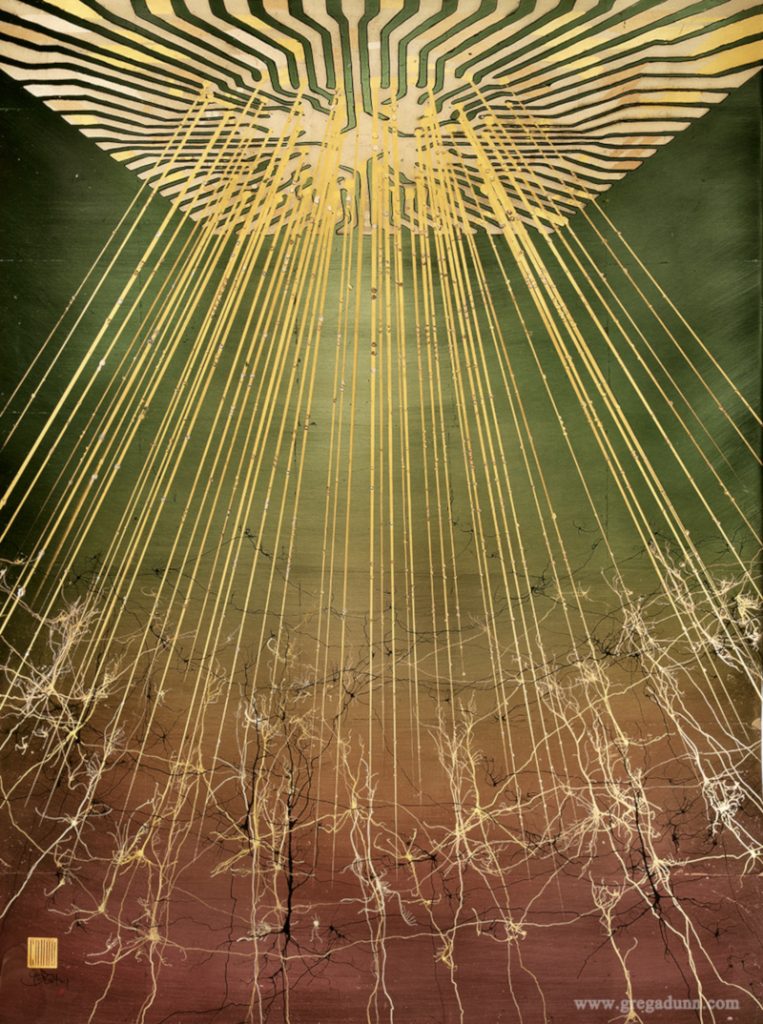
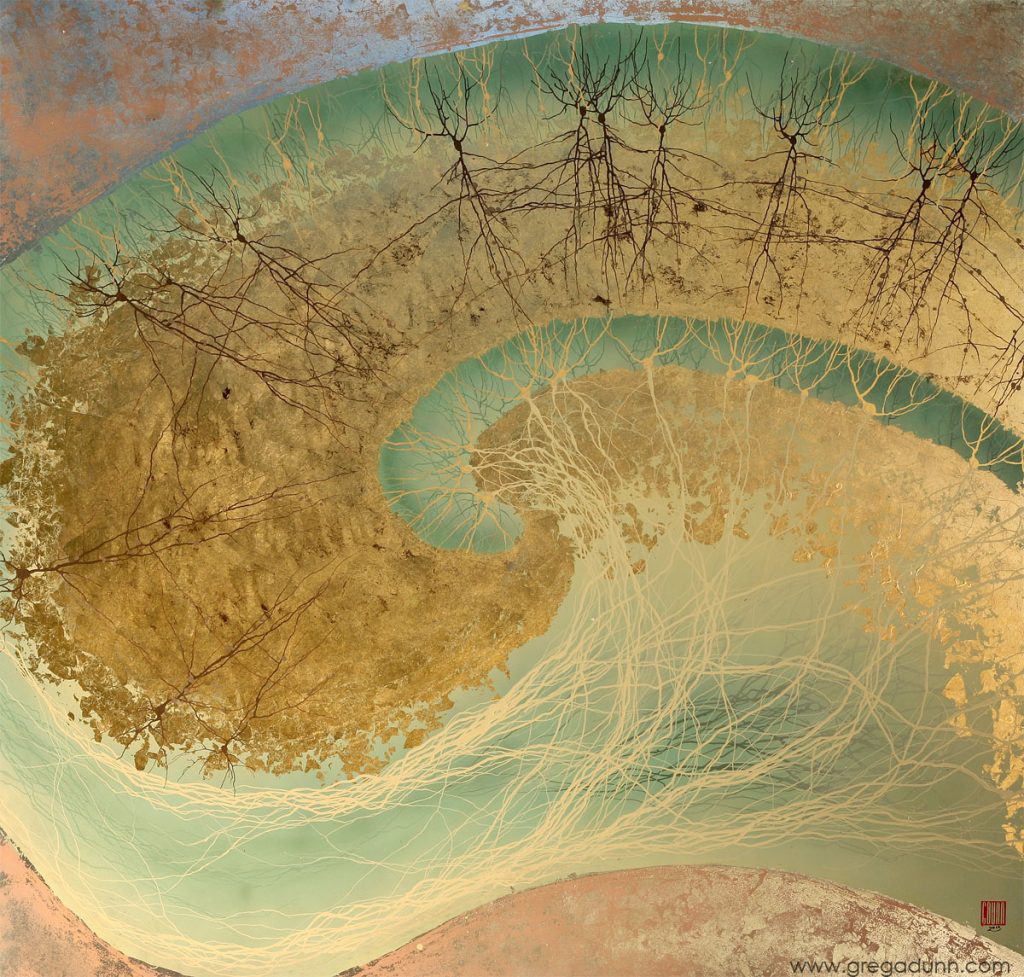
Artwork/Exhibition you are most proud of:
Probably my piece Self Reflected, made in collaboration with my applied physicist buddy Dr. Brian Edwards. This was a multiyear project made with eight other student and scientist collaborators which was an effort to depict a slice of the brain with a degree of complexity never before seen. There is a lot to say about this project, so if you’re interested to read more, I’d recommend checking out my website.
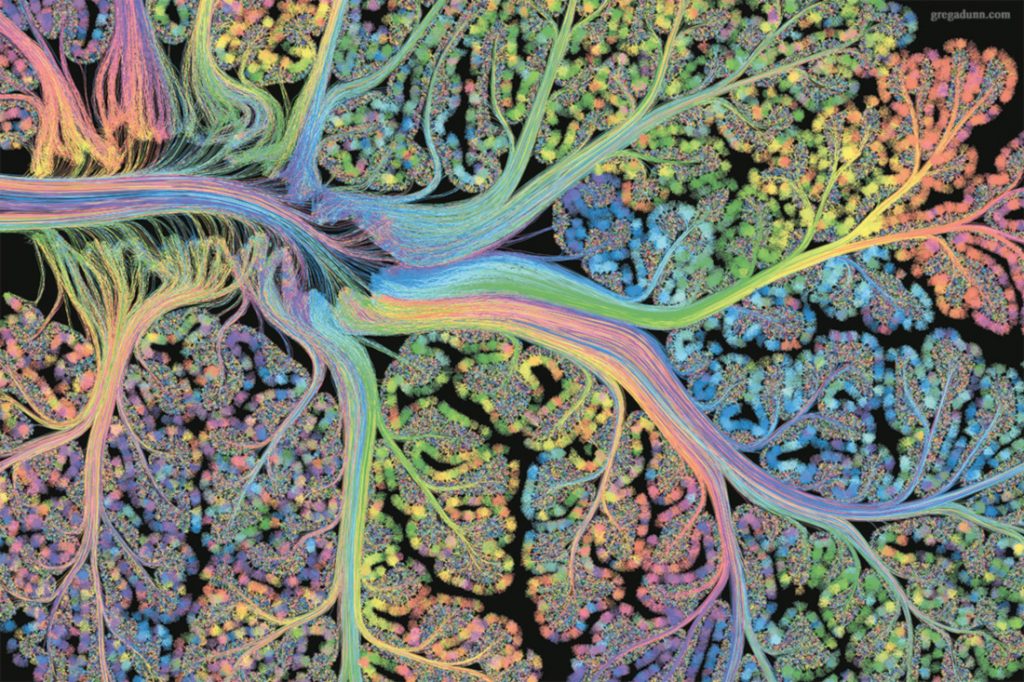
Which scientists and/or artists inspire and/or have influenced you?
Santiago Ramón y Cajal is of course an inescapable influence. His research and drawings really defined the aesthetic appreciation of the brain, and his work has directly influenced my own pieces for sure.
I’m also a big fan of turn of the century art, particularly in the collision between western and eastern influences around that time. The eccentric Japanese painter Ito Jakuchu is a favorite of mind, along with Gustav Klimt, Alphonse Mucha, Kay Nielsen, and Sakai Hoitsu. Some of my scientific heroes include Ed Boyden, Neri Oxman, Jim Eberwine, Christian Huygens, and Nikola Tesla.


Is there anything else you want to tell us?
In almost every case, you will learn more through making things than you will ever learn from reading a book. If you are trying to find your artistic or scientific voice, you are best off doing the experiments and testing things out. Figuring out the ways in which your interests and passions intersect will yield you your clearest and most well-defined voice.
“Figuring out the ways in which your interests and passions intersect will yield you your clearest and most well-defined voice.”
Greg Dunn
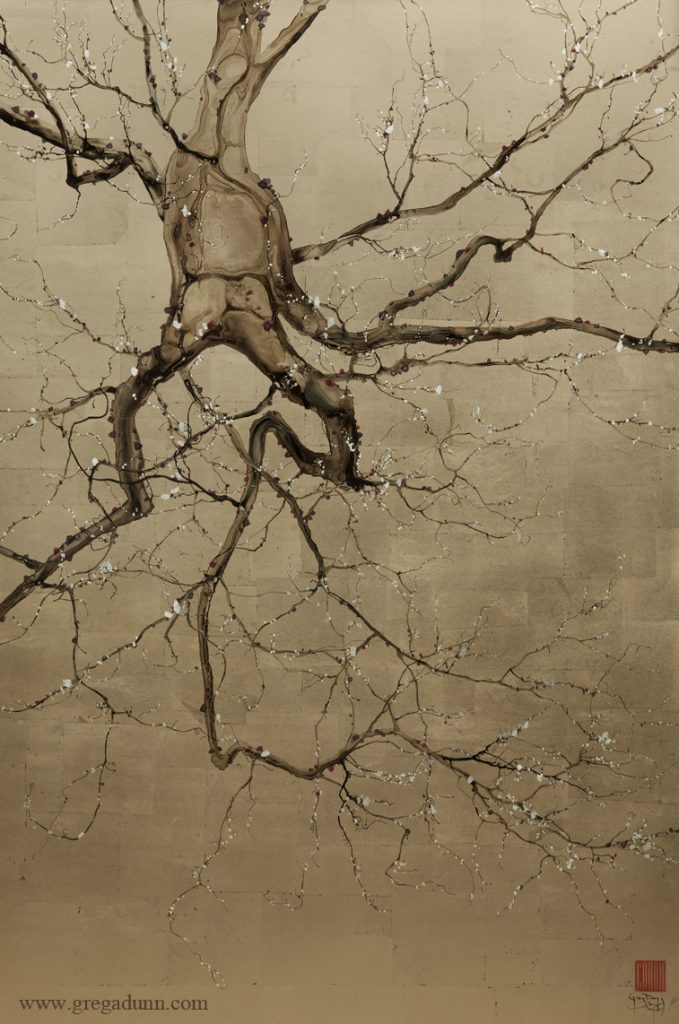
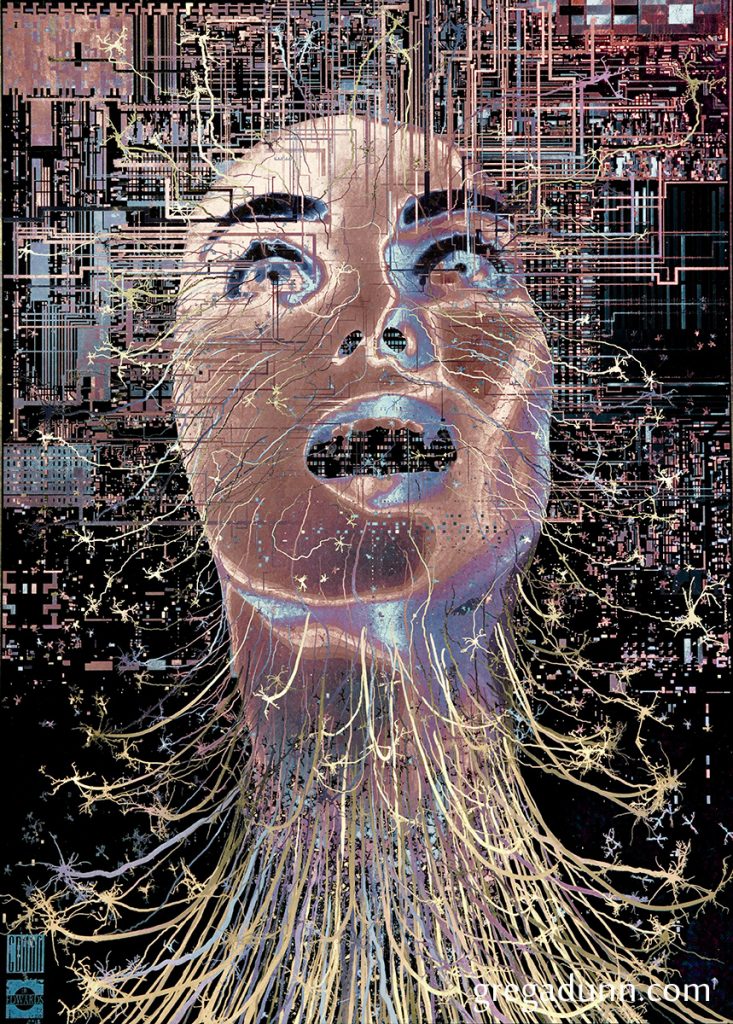

For more by Greg Dunn, visit his website, Instagram, or Twitter.
Share this Post

